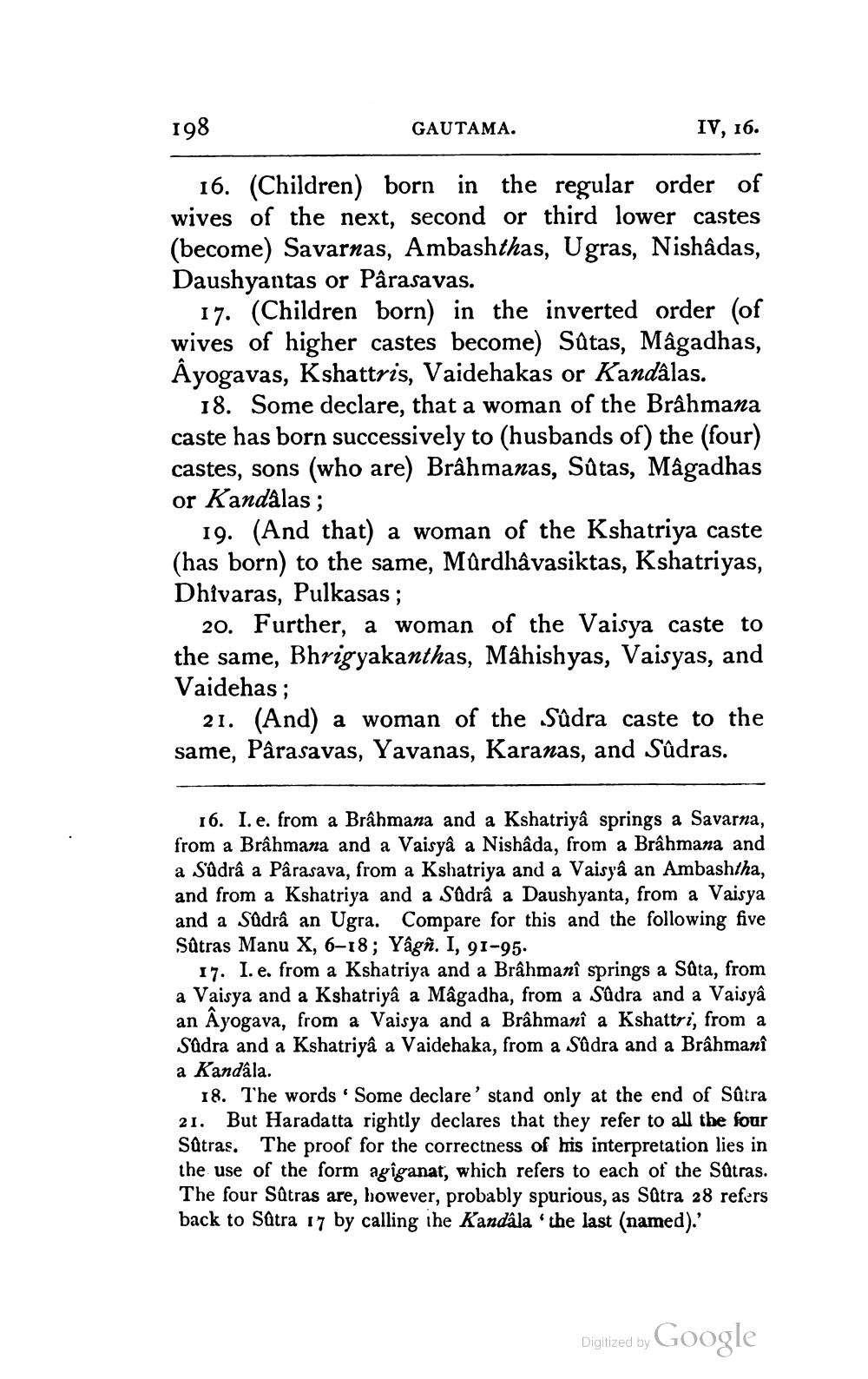________________
198
GAUTAMA.
IV, 16.
16. (Children) born in the regular order of wives of the next, second or third lower castes (become) Savarnas, Ambashthas, Ugras, Nishâdas, Daushyantas or Pârasavas.
17. (Children born) in the inverted order (of wives of higher castes become) Satas, Mâgadhas, Âyogavas, Kshattris, Vaidehakas or Kandalas.
18. Some declare, that a woman of the Brâhmana caste has born successively to (husbands of) the (four) castes, sons (who are) Brâhmanas, Sûtas, Magadhas or Kandalas;
19. (And that) a woman of the Kshatriya caste (has born) to the same, Mûrdhâvasiktas, Kshatriyas, Dhivaras, Pulkasas;
20. Further, a woman of the Vaisya caste to the same, Bhrigyakanthas, Mâhishyas, Vaisyas, and Vaidehas ;
21. (And) a woman of the Sûdra caste to the same, Parasavas, Yavanas, Karanas, and Sûdras.
16. I. e. from a Brâhmana and a Kshatriyâ springs a Savarna, from a Brâhmana and a Vaisyâ a Nishâda, from a Brâhmana and a Sûdrâ a Pârasava, from a Kshatriya and a Vaisyâ an Ambashtha, and from a Kshatriya and a Sadra a Daushyanta, from a Vaisya and a Sudrâ an Ugra. Compare for this and the following five Sûtras Manu X, 6-18; Yâgn. I, 91-95.
17. I. e. from a Kshatriya and a Brâhmanî springs a Sûta, from a Vaisya and a Kshatriyâ a Mâgadha, from a Sadra and a Vaisyâ an Ayogava, from a Vaisya and a Brâhmanî a Kshattri, from a Sudra and a Kshatriyâ a Vaidehaka, from a Sûdra and a Brâhmanî a Kandala.
18. The words. Some declare' stand only at the end of Sûtra 21. But Haradatta rightly declares that they refer to all the four Sûtras. The proof for the correctness of his interpretation lies in the use of the form agiganat, which refers to each of the Sätras. The four Sûtras are, however, probably spurious, as Sätra 28 refers back to Sūtra 17 by calling ihe Kandala the last (named).'
Digitized by Google




